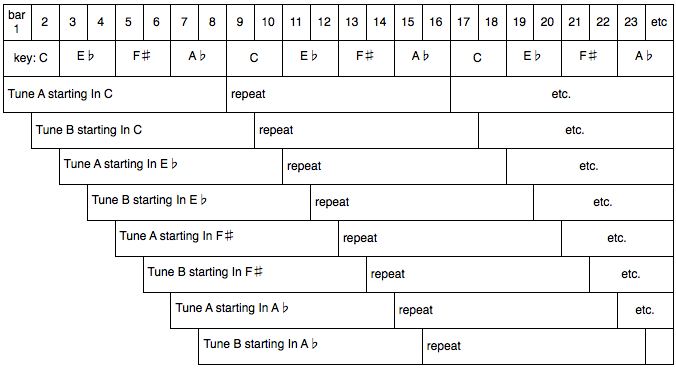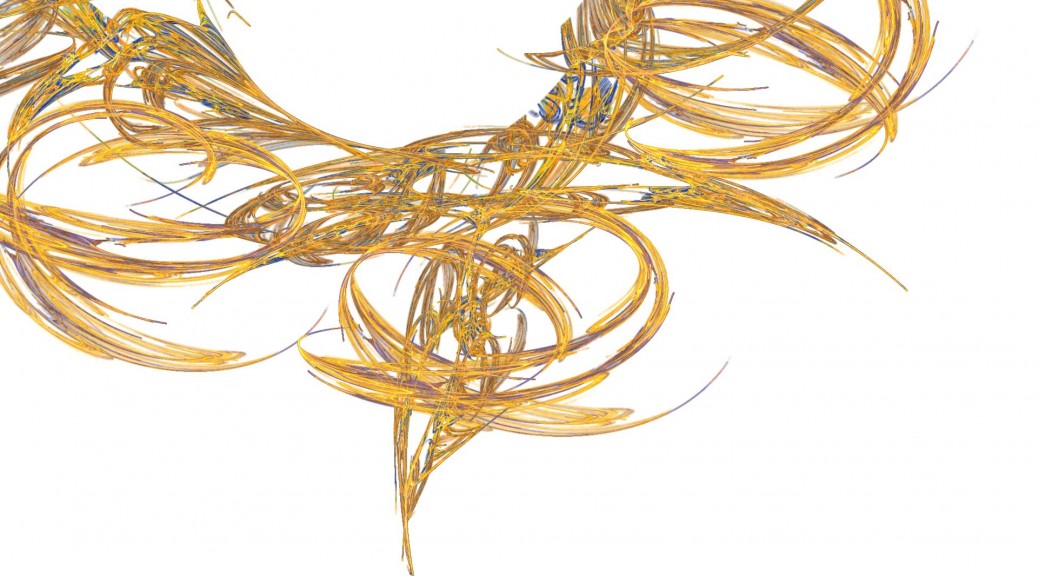This is a cheat, since I’d already finished this piece, but I didn’t want to fill up the Practical Music section with an explaination of it, so I’ve moved that discussion here.
Get Another Round In
is a strict canon 8 in 2 at the minor 3rd.
What that means is:
- canon
- A canon is a piece where voices enter one after another with the same tune. Simple examples would be “London’s Burning” or “Row, row, row your boat” however those pieces are really just rounds, because all the voices are at the same pitch. In a Canon the voices may and usually do start on different pitches.
- strict
- A strict canon is where each voice sings precisely the same tune, so if they start on different notes they must be in different keys.
- 8 in 2
- This means eight voices singing two different tunes, four voices to each tune.
- at the minor 3rd
- Each pair of voices enters a minor third above, or as in this case a major sixth below, the previous pair.
So how do you write such a thing? Well I’m not very good at counterpoint, so I took a simpler approach:
- Write a two-bar chord progression that modulates up a minor third.
- Transpose that progression up a minor third and append it to the first.
- repeat another 2 times. Now you have a progression that, if it started in C, would modulate to E flat, then to F sharp, then to A flat and finally back to C.
- Write a tune over the whole of that eight-bar sequence.
- Write a second tune over the whole of that sequence, but starting one bar in.
- Now if both those tunes start in C, then if you transpose them up a minor third (or down a major 6th) they will both start in E flat and will match the whole of the progression, but starting two bars in.
- So shift the transposed tunes right two bars and repeat (transposing and shifting) another two times.
- That means you have eight voices, all entering at different times, all harmonizing with one another, and each pair of voices starting in a different key. Pretty neat eh?
Here’s a picture to illustrate:

What may confuse you when listening:
- Tune A is played all the way through once on its own at the start.
- Tunes A and B are quite similar, they both start with the same phrase.
- The original eight-bar harmonic sequence is played at the end on piano as an accompaniment.
